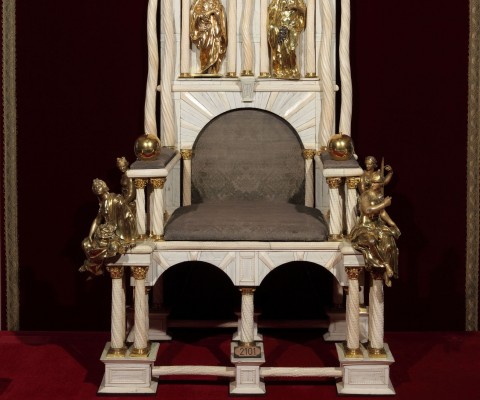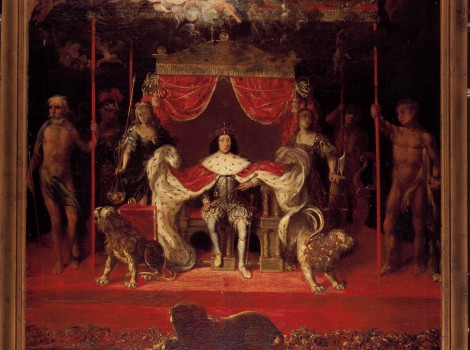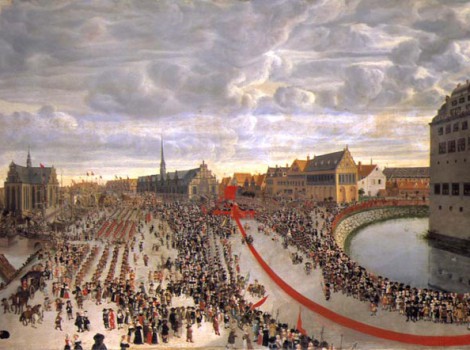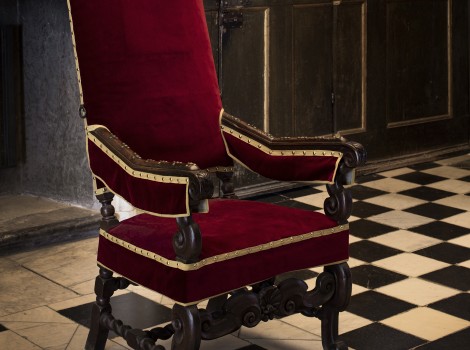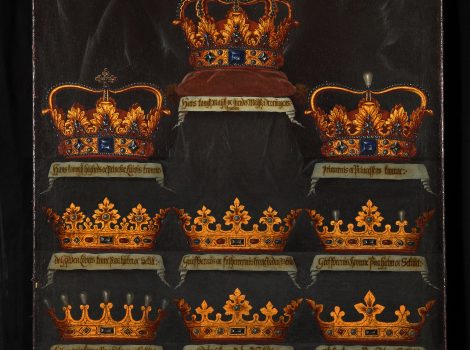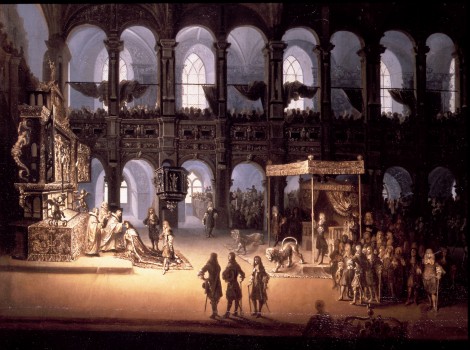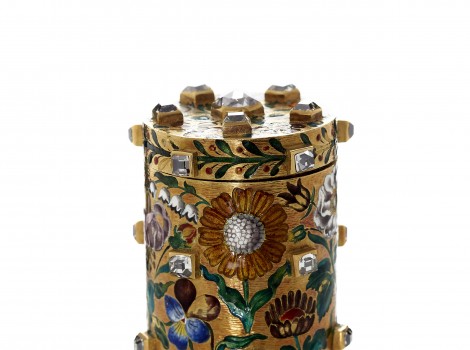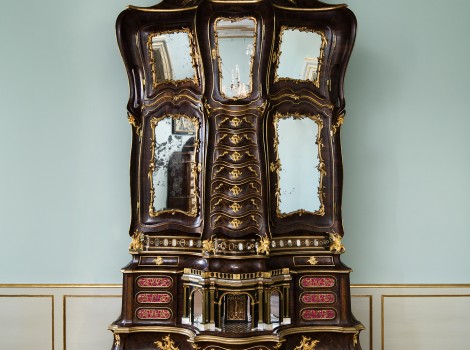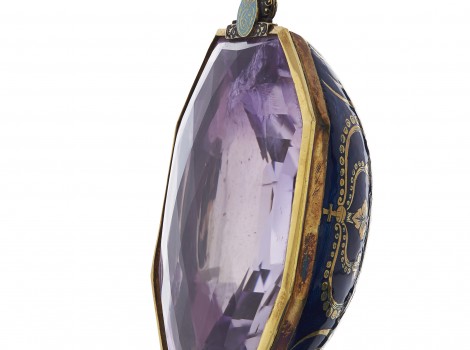Coronation chair, King
The coronation chair of the Danish kings, used at coronations between 1671-1840 during the institution of Absolute Monarchy, by Bendix Grodtschilling 1662-1671.
The gilt figures were added during Christian V’s reign. The chair was used at coronations from 1671-1840.
Frederik III ordered this chair along the same lines as the silver lions, inspired by the stories of King Solomon from the Old Testament. To further enhance its legendary status, it was said that it was composed by unicorn horn. In reality, however, it is made from narwhale tusks, a material the danish kings could initially claim almost as their own because of the danish ownership of Iceland and the Faroe islands.
Christian VIII was the last coronated king, 1840, and immediately after the succesion of his son King Frederik VII in 1848, Frederik VII signed the first constitution in 1849. Since regents are no longer coronated, the subsequent succesions up until this day, have traditionally been marked by the proclamation of the death of the old regent by the primeminister, followed by three “long live…the new regent”, from the balcony of Christiansborg.
For more information on royal artefacts, please visit the website of the Danish monarchy

 Dansk
Dansk
 English
English
 Deutsch
Deutsch

